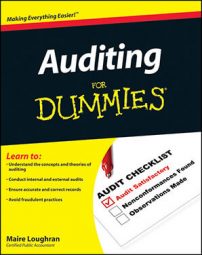All auditors must know what a contingent liability is and how to handle it, but suppose your audit client doesn’t tell you it has contingent liabilities? What can you do to protect the good name of your CPA firm by finding all reportable contingent liabilities and producing a correct audit report? Here are the steps you should take to ensure due diligence regarding contingent liabilities.
Check with the client’s outside counsel: Your client should send a legal letter to its independent attorney (who is retained by the company, as opposed to being employed by the company) to obtain or corroborate information about any pending litigation, tax assessments, and warranty claims. A legal letter is similar to a confirmation because it asks for information from an independent third party to verify assertions made by your audit client. (In this case, you’re also trying to sniff out any contingent liabilities your client may have failed to mention.) Your client’s management prepares the letter, but you provide the guidelines for the type of information requested.
Here are some of the types of information you ask your client to get from its attorney:
A list and progress report of any pending or eminent litigation to which the attorney has given substantial attention.
A description of agreed-upon materiality levels. For example, the attorney reports only on litigation whose potential awards are over a certain dollar amount.
A list of other claims, such as warranties or guarantees, that management believes are probable or reasonably possible to have a bad negative outcome for the client, plus a request that the attorney comment if her opinion of the claims differs from management’s opinion.
You can discover a lot about your audit client simply by doing an Internet search. Product warranty issues and pending lawsuits often make the news.
Search for tax assessments or guarantees: When you’re looking for tax assessments or guarantees, start by taking these two steps:
Examine the meeting minutes of the board of directors: Reading the minutes of the board of directors is part of many of your business and financial processes audit procedures. See if the minutes show that the board approved guaranteeing any loans. If so, examine the facts and circumstances around the guarantee. Make note of any guarantee that has the potential to be a contingent liability, and query your client’s management about it. For example, maybe you notice in the newspaper’s business section that the business whose loan your audit client has guaranteed is considering filing for bankruptcy.
Review correspondence from governmental agencies: Ask your client to provide any notices or letters from all governmental agencies — federal, state, and local — to see whether any potential tax deficiencies exist. If the government agency has already assessed additional tax (or is in the process of doing so), talk with client management personnel to see whether they plan to appeal the proposed assessment. Discuss the circumstances with your audit team leader to get his opinion regarding whether this event should be reported or disclosed.

